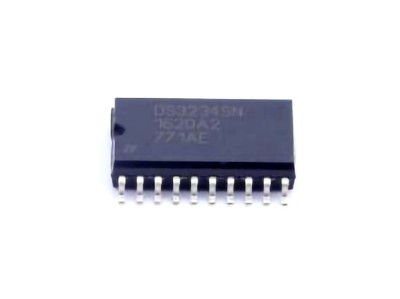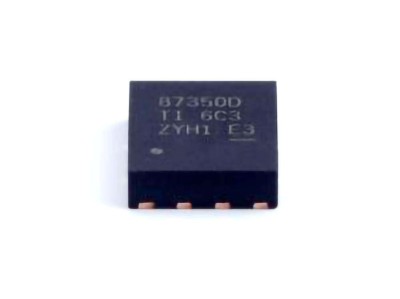
The FT232HL USB to serial converter IC is widely used for communication between computers and embedded systems. However, users often encounter issues when using the FT232HL in their projects. This article will discuss common troubleshooting techniques, solutions, and tips for resolving FT232HL-related problems.
The FT232HL is a versatile and reliable USB-to-serial converter, commonly used for data communication between computers and embedded systems. It’s favored for its ease of use, but like any hardware component, users may encounter a variety of issues when interfacing with the FT232HL. Fortunately, most of these issues are relatively simple to resolve with the correct troubleshooting steps.
1. Understanding FT232HL: A Quick Overview
The FT232HL chip from FTDI (Future Technology Devices International) is an essential tool for converting USB signals into RS232, RS422, or RS485 serial data. It plays a crucial role in allowing microcontrollers and other embedded devices to communicate with computers via USB. The FT232HL offers high-speed communication and is widely supported in various operating systems.
Despite its reliability, users sometimes experience problems with device recognition, data transmission, and driver conflicts. Understanding the possible causes of these issues and knowing how to resolve them is vital for ensuring smooth communication.
2. Common Issues with FT232HL
Here are some of the most common problems users encounter when working with the FT232HL:
A. Device Not Recognized by the Computer
One of the most frequent issues is that the FT232HL does not show up as a recognized device on a computer after being plugged in via USB. This problem can be caused by several factors, including incorrect driver installation, insufficient Power , or even a faulty USB port.
Solutions:
Check USB Drivers : Ensure the correct FTDI Drivers are installed. FTDI provides drivers for Windows, macOS, and Linux. If your system is missing the appropriate drivers, visit the FTDI website to download and install them.
Try a Different USB Port: USB ports can sometimes fail or provide insufficient power to connected devices. Try connecting the FT232HL to a different USB port, preferably one directly on the computer rather than through a hub.
Check Device Manager (Windows): Open Device Manager on Windows and look under the “Ports (COM & LPT)” section. If the FT232HL is recognized, it should appear here. If it shows an error, you might need to uninstall and reinstall the drivers.
B. Driver Conflicts or Outdated Drivers
Driver issues are another common cause of FT232HL malfunction. If the drivers are outdated or if there’s a conflict between the FTDI driver and other system drivers, the device may not function correctly.
Solutions:
Update Drivers: Always ensure that you are using the latest drivers from the FTDI website. Older drivers may not be compatible with newer versions of operating systems or other hardware.
Reinstall Drivers: If your system is still not recognizing the FT232HL, uninstall the current driver via Device Manager, and then reinstall the latest version from FTDI’s official site.
C. No Data Transmission or Slow Data Transfer
In some cases, the FT232HL might appear to work fine but fail to transmit data properly, or the data transfer rate may be slower than expected. This can be due to several factors, including improper baud rate settings, incorrect wiring, or software-related issues.
Solutions:
Check Baud Rate: The baud rate setting on the FT232HL must match the baud rate set in your software application or on the device it’s communicating with. Mismatched baud rates can result in slow or no data transfer. Ensure that both sides of the communication link are set to the same baud rate.
Verify Wiring: Double-check that the FT232HL’s TX, RX, and GND pins are connected correctly to the target device. Incorrect wiring can prevent data transmission or lead to corrupted data.
Test with Different Software: Try a different terminal program or communication software to rule out software-related issues. Sometimes, bugs or incompatibilities in the software can cause data transfer problems.
D. Inconsistent or Unstable Connection
Another frequent issue is an inconsistent or unstable USB connection. This could result in dropped data packets, communication interruptions, or random disconnections.
Solutions:
Check USB Cable Quality: A faulty or low-quality USB cable can introduce noise or resistance, leading to an unstable connection. Try using a different USB cable and ensure it is of good quality.
Ensure Sufficient Power Supply: In some cases, the FT232HL may not receive enough power from the USB port, especially when it’s connected to certain low-power USB hubs. Plug the device directly into a USB port on the computer or use a powered USB hub.
Use External Power Source: If your FT232HL-based device requires more power than the USB port can provide, consider using an external power supply.
3. Advanced Troubleshooting: Tips for Experts
For users who have exhausted basic troubleshooting and still face issues, some advanced solutions may be necessary. These involve more in-depth techniques, such as checking the FT232HL’s internal configuration, updating firmware, or examining potential hardware failures.
A. Check the FT232HL’s Internal EEPROM
The FT232HL features an internal EEPROM that stores configuration data such as product ID, vendor ID, and other settings. If this data becomes corrupted or misconfigured, it can cause communication failures.
Solutions:
Reset EEPROM: FTDI offers a utility tool called FT_Prog that allows users to reset or reprogram the EEPROM settings. Using this tool, you can restore the default settings or reconfigure the chip for your specific needs.
Update Firmware: FTDI occasionally releases firmware updates for the FT232HL. These updates can improve performance, fix bugs, or add new features. Check FTDI’s website for the latest firmware updates and follow their instructions for upgrading.
B. Check for Short Circuits or Hardware Failures
If none of the software-related troubleshooting steps resolve the issue, there could be a hardware failure. Inspect the FT232HL chip and associated circuitry for signs of damage, such as burned components or short circuits.
Solutions:
Visual Inspection: Carefully examine the FT232HL for signs of physical damage, such as scorch marks or broken pins.
Test on Another Board: If possible, test the FT232HL chip on a different circuit board to rule out issues with the surrounding components.
C. Use External Debugging Tools
For complex issues that are difficult to resolve, using external debugging tools like a logic analyzer or oscilloscope can help pinpoint the problem. These tools allow you to observe the electrical signals on the USB, TX, RX, and other relevant pins to diagnose communication failures.
4. Optimizing the FT232HL Performance
Once the common issues are addressed and the FT232HL is functioning properly, users may want to optimize the performance of the device for their specific applications. The FT232HL is capable of high-speed data transfer, but optimizing your setup can ensure that you get the best possible performance.
A. Selecting the Right Baud Rate
One of the most critical factors for ensuring optimal performance is setting the correct baud rate. While the FT232HL supports a wide range of baud rates, selecting a rate that is too high for your system can lead to data corruption or loss.
Solutions:
Test Different Baud Rates: If you are experiencing data transfer issues, experiment with different baud rates to find the optimal setting. Lower baud rates tend to be more stable and less prone to errors, while higher rates offer faster communication speeds at the risk of data integrity.
Check Device Limitations: Ensure that the device on the other end of the FT232HL communication link can handle the chosen baud rate. Some embedded systems or older devices may not support high-speed communication.
B. Maximizing USB Throughput
To maximize USB throughput, ensure that the FT232HL is operating under optimal conditions. The USB interface has inherent limitations on data transfer speed, but you can optimize it by minimizing overhead and ensuring that your system is not overloaded with other tasks.
Solutions:
Reduce USB Traffic: Limit the number of USB devices connected to the same port or hub. Sharing bandwidth between multiple devices can reduce the overall throughput available to each device.
Use USB 3.0 or Higher: If possible, use USB 3.0 or higher ports to ensure faster data transfer rates compared to USB 2.0 ports. The FT232HL supports high-speed USB 2.0, but connecting to a USB 3.0 port can improve overall performance.
C. Avoiding Data Bottlenecks
When transferring large amounts of data, it’s important to avoid bottlenecks that could slow down the communication process. Bottlenecks can occur due to slow processing speeds, insufficient buffer sizes, or other factors.
Solutions:
Increase Buffer Size: If your application involves transmitting large amounts of data, increase the size of the receive and transmit buffers. This will help prevent data overflow and improve throughput.
Use Hardware Flow Control: Enabling hardware flow control (RTS/CTS) can help manage the flow of data, preventing data loss and improving overall reliability.
5. Conclusion
The FT232HL is a powerful and reliable USB-to-serial converter that facilitates communication between embedded systems and computers. While users may occasionally encounter issues with device recognition, data transmission, or stability, these problems can usually be resolved through a systematic troubleshooting approach. By ensuring proper driver installation, checking hardware connections, and using advanced diagnostic tools, users can quickly identify and fix most issues. Additionally, optimizing the FT232HL’s performance through proper configuration and adjustments can further enhance its capabilities, ensuring smooth and efficient data transfer for a variety of applications.
With the information provided in this guide, users should now have the tools they need to address common FT232HL problems and get the most out of this powerful USB-to-serial interface.
If you're looking for models of commonly used electronic components or more information about FT232HL datasheets, compile all your procurement and CAD information in one place.
(Partnering with an electronic component supplier) sets your team up for success, ensuring that the design, production and procurement processes are streamlined and error-free. (Contact us) for free today


